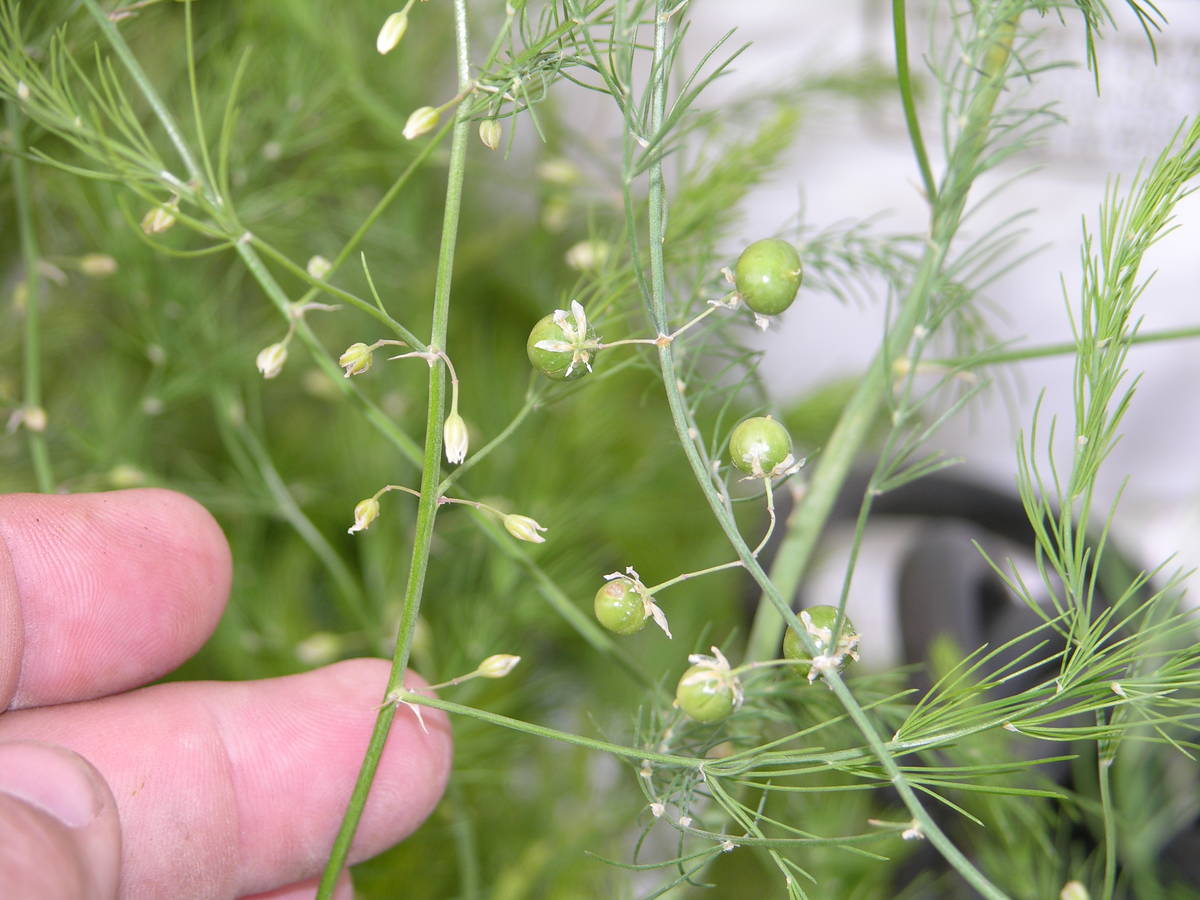Without flowering, tree will not produce fruit
Q: Have you seen a reduction in the fruit of plums and pluots this year? My trees are three to five years old, and I did not see many flowers on them this spring. Not a lack of pollination, but a lack of flowers. This year the trees have anywhere from five to 20 fruit, and last year they were easily over 100.
A: Yes, I have seen a reduction in the amount of fruit produced this year in some varieties and types of fruit trees. If little fruit is produced but the tree flowered, it can be for many different reasons such as a quick freeze before sunrise when the tree is flowering — wind, not enough pollinators like honeybees and others.
But you nailed it. The first question to ask yourself when there’s no fruit is, “Did it flower?” You told me your trees didn’t flower. Without flowering it’s impossible for a fruit tree to produce fruit.
A lack of flowering this year, yet the trees flowered in previous years, is very telling. It is either something you did that contributed to its lack of flowering or something inherent to those varieties of fruit trees.
The three most common reasons for growth and no flowers are heavy pruning, applying too much high-nitrogen fertilizer and — common to some types of fruit and nut trees — a trait called “alternate or biennial bearing.” A lack of flower production can be for several reasons in combination.
Reducing the size of a fruit tree by pruning can shove it into a “younger” stage of development, particularly when they’re only a few years old. Some fruit trees are more finicky about this than others.
These trees like to maintain a specific size relationship between their root system and the spread of their limbs or shoots. This is called the tree’s root-to-shoot ratio.
When the top of the tree is pruned, the tree may favor the ratio of roots to shoots it had before pruning. When the top is pruned back, the tree throws all its energy into new growth at the expense of flowering. Luckily, this interruption lasts only one season.
The same interruption happens when high-nitrogen fertilizers (the first number on the fertilizer bag) or excessive amounts of fertilizer are applied to fruit trees. A telltale clue is its rapid spring growth and its dark green leaves.
I like to see about 18 to 24 inches of new growth on young trees. I know we want trees to get big fast, but be careful with high-nitrogen fertilizers.
Both visual clues (lots of growth and dark green leaves) are signs the tree received too much nitrogen in its fertilizer. Apply a lesser amount of fertilizer (or even consider no fertilizer that year) that best matches its need for both growth and fruit production.
The third reason may be a fruit and nut tree trait called “alternate or biennial bearing.” Some types of fruit and nut trees can produce fruit heavily one year and then fruit lightly the next. These trees are susceptible to cycles of abundant fruit followed by a trickle of fruit the following year.
Trees that exhibit this kind of trait should be thinned of fruit during years of high production. Heavy thinning in abundant years reduces the trait of alternate bearing.
Q: I put sulfur in the ground around my yellow bells, and the leaf edges that were browning cleared up. Why isn’t sulfur mentioned more often?
A: Sulfur is not usually mentioned much, but it can be effective in soils for two reasons: It is a plant nutrient needed in large amounts by all plants, and it can lower the alkalinity (pH) of soils under the right conditions.
Sulfur is needed by plants in large amounts. It is a nutrient. Most of our soils have enough sulfur in them from the parent rocks, so adding it is not that important.
If you are curious whether your soil contains enough sulfur, send a sample to a soil-testing laboratory and find out. The lab needs about 2 cups of soil to analyze it. Another option is to add sulfur to the soil (as you did) and look for plant improvement (which you also did).
When pure sulfur dissolves in the soil it makes sulfuric acid. This acid helps to lower our soil alkalinity. This lowering of soil alkalinity is measured on the pH scale.
This will not happen when using fertilizers that contain only sulfates. A lowering of alkalinity makes plant nutrients such as iron, manganese and zinc — needed in smaller amounts by plants — easily available.
The problem with adding sulfur to soils is its granular size, the moisture needed to make sulfuric acid and warm soil temperatures. Mixing small or pulverized pure sulfur granules or sulfur powder into wet soil during the summer months has the best chance of reducing alkalinity in soil and getting good plant results quickly.
Q: My wife and I were out hiking and found some wild asparagus growing in the desert, not close to any water. How did it get in these remote places?
A: Asparagus is thought to be Mediterranean in origin. Like many nondesert plants, it grows best with access to water.
When wild asparagus is found in the desert it is usually found near irrigation ditches or other oasis-like places that can supply it with water. Sometimes it was abandoned by homesteaders or seed was dropped by animals, particularly birds. In any case, to survive in the desert it had to have access to water from somewhere.
When asparagus spears are grown after harvesting, they produce flowers and then berries and seed. Flowering starts when the spears fern out at about 3- to 4-foot heights and eventually bush to about 5 or 6 feet tall.
Asparagus, just like mulberries and ash trees, are dioecious, meaning there are boy and girl plants separated from each other. The best spear producers are the male plants. All-male plants are favored for spear production.
The best seed producers are female plants. Female plants are not as popular as male plants because their potential growth is used in seed production.
Just like the trees mentioned, there is a 50-50 mix of boy and girl plants after germination from seed. Asparagus seed is not difficult to germinate. When the seed is soaked in water for a couple of hours and planted, it germinates easily.
How asparagus grew there is a good question. But I’m guessing thousands of seeds didn’t make it while this one did, if dropped there by animals.
Q: I saw that you are recommending a length of rebar for determining how deep water goes in the soil after an irrigation. That will not work on my property. I have too many rocks. Every time I push rebar into the soil it hits a rock.
A: Instead of using a stick of rebar, use a shovel to determine the depth of water penetration in the soil. Apply a normal irrigation and track the depth of water penetration in the soil with a shovel.
Add more or larger drip emitters where more water is needed. Use smaller or fewer drip emitters where less is needed. Irrigation valves control when water is applied, but the depth water penetrates in the soil is controlled by the size and number of drip emitters.
After this is done once, there will be little need for determining the depth of irrigation again unless the size and number of drip emitters are changed.
Q: Do you have any advice on what I can do to green up bamboo planted in rock mulch and damaged from the winter cold? Give it iron perhaps?
A: There are three types of bamboo used for landscaping in Las Vegas. One type is a true bamboo that can sucker from its base (clumping) and increase its girth with short rhizomes.
A second type of true bamboo sends runners (rhizomes) longer distances underground to new locations where there is water. These are called running types of bamboo.
A third type is not bamboo at all but called heavenly bamboo or nandina. This type of plant also clusters from its base, like a clumping bamboo.
Fortunately, all three can be cleaned up the same way; prune them back to within 1 or 2 inches of soil to force them to re-sucker from the base. Since the first two plants are grasses, any fertilizer high in nitrogen will force the suckers to grow green again.
Nandina is different. It is not considered a grass and should be fertilized with an all-purpose tree and shrub fertilizer.
Apply this fertilizer before cutting them back. Then prune them, give them water, and watch them grow. All three of these plants will benefit from an iron application.
Bob Morris is a horticulture expert and professor emeritus of the University of Nevada, Las Vegas. Visit his blog at xtremehorticulture.blogspot.com. Send questions to Extremehort@aol.com.























